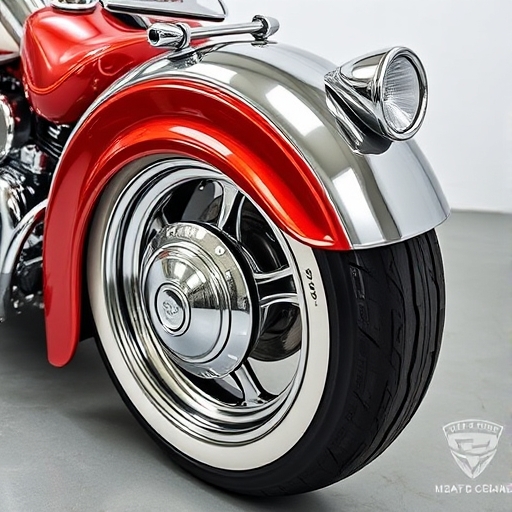How to Paint Chrome: A Comprehensive Guide
Painting chrome can be a daunting task, but with the right techniques and materials, you can achieve a stunning finish that revitalizes your chrome surfaces. Whether you want to change the color of your chrome accessories, furniture, or car parts, this guide will walk you through the process step-by-step.
Why Paint Chrome?
Chrome is known for its shiny and reflective surface, which makes it an attractive material for various applications. However, there are several reasons why you might want to paint chrome:
- Aesthetic Changes: You may want to match the chrome with other colors in your decor or vehicle.
- Restoration: Over time, chrome can become dull or tarnished, and painting can restore its appearance.
- Protection: Paint can provide a protective layer against corrosion and scratches.
- Chrome Surface: The item you wish to paint.
- Degreaser: To clean the chrome surface.
- Sandpaper: A range from 80 to 220 grit for surface preparation.
- Primer: A special primer designed for metal surfaces or specifically for chrome.
- Paint: Choose a high-quality spray paint or brush-on paint suitable for metal.
- Clear Coat: To seal and protect the painted surface.
- Masking Tape: To protect areas you do not want to be painted.
- Protective Gear: Gloves, goggles, and a mask to safeguard against fumes and dust.
- Use masking tape to cover any areas that you do not wish to paint. This is particularly important for intricate designs or parts that fit together.
- For spray paint, hold the can about 6-12 inches from the surface and apply in thin, even coats.
- If using a brush, apply the paint with smooth strokes to avoid streaks.
- Work in a Well-Ventilated Area: Always paint in a well-ventilated space to avoid inhaling fumes.
- Test First: If you are unsure about how the paint will look, test it on a small hidden area first.
- Temperature and Humidity: Ideal painting conditions are between 50°F and 90°F with low humidity.
- Follow Manufacturer Instructions: Always follow the guidelines provided by the paint and primer manufacturers for the best results.
Materials Needed
Before you get started, make sure you have the following materials on hand:
Step-by-Step Process
Step 1: Preparation
Clean the Chrome
1. Degrease: Start by cleaning the chrome surface with a degreaser. This will remove any oils, dirt, or grime that could interfere with adhesion.
2. Rinse and Dry: Rinse the surface with water and dry it thoroughly with a clean cloth.
Sand the Surface
1. Rough Up the Chrome: Use sandpaper (80 to 220 grit) to lightly sand the chrome surface. This helps the primer and paint adhere better.
2. Dust Off: After sanding, wipe the surface with a clean cloth to remove any dust particles.
Step 2: Masking
Step 3: Priming
1. Apply Primer: Use a primer that is specifically designed for metal or chrome surfaces. Spray or brush it evenly over the chrome.
2. Drying Time: Allow the primer to dry according to the manufacturer’s instructions. This usually takes about 30 minutes to an hour.
Step 4: Painting
1. Choose Your Paint: Select a high-quality spray paint or brush-on paint designed for metal surfaces.
2. Apply Paint:
3. Multiple Coats: Depending on the color and coverage, you may need two or three coats. Allow each coat to dry completely before applying the next.
Step 5: Clear Coating
1. Apply Clear Coat: Once the paint is fully dry, apply a clear coat to protect the surface. This will enhance the finish and increase durability.
2. Final Drying: Allow the clear coat to dry completely according to the instructions.
Tips for Success
Comparison Table: Types of Paint for Chrome
| Type of Paint | Pros | Cons |
|---|---|---|
| Spray Paint | – Easy application | – Can overspray |
| – Quick drying | – Requires even coats for best finish | |
| Brush-On Paint | – More control | – Longer drying time |
| – Less overspray risk | – Requires careful application | |
| Specialty Paint | – Designed specifically for chrome | – Often more expensive |
Frequently Asked Questions (FAQ)
Can I paint over chrome without sanding?
While it is technically possible to paint over chrome without sanding, it is not recommended. Sanding creates a rough surface that helps the paint adhere better, ensuring a longer-lasting finish.
How long does painted chrome last?
With proper preparation and application, painted chrome can last several years. The durability will depend on factors such as the quality of the paint used and the conditions the item is exposed to.
What type of primer should I use?
Use a primer specifically designed for metal surfaces or chrome. This ensures better adhesion and a smoother finish.
Can I use regular spray paint on chrome?
Regular spray paint may not adhere well to chrome surfaces. It is advisable to use paint formulated for metal or chrome for the best results.
How do I remove paint from chrome?
To remove paint from chrome, you can use a paint stripper designed for metal or carefully sand the paint off. Be cautious not to scratch the chrome surface.
Conclusion
Painting chrome can transform the look of an object and provide a layer of protection against wear and tear. By following the steps outlined in this guide, you can achieve a professional-looking finish that enhances your surfaces. Remember to take your time during preparation and application, as these steps are crucial for a successful project. Happy painting!

